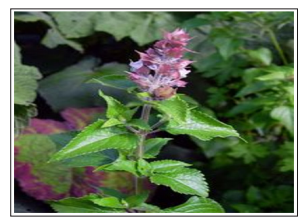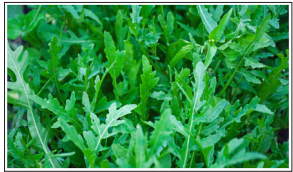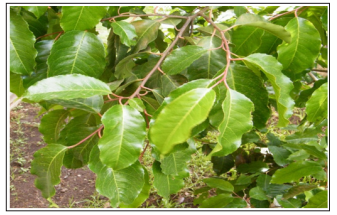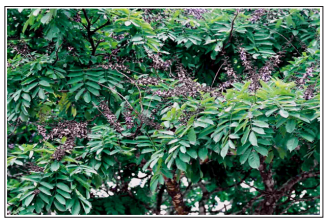Author(s): Endalew Kufi
Traditional resources are used by local people in reliving different forms of illness. Such resources are not only produced and used but also cared for ethically, in a morally sustainable manner. This paper presents traditionally selected medical resources in Oromo that are present in the form of herbs, roots, vegetables and food items. The aim is to introduce the local medication system and help experiential exchange with other societies in Ethiopia and elsewhere. Oromo people are culturally vast and ethnically well-grounded as they have their own distinct system-Gadaa System- which has three forms of interchange. To Oromo, man is attached to God’s Law and abides by the existing social norm. An Oromo person also learns and acts to love and respect other members with due care and dignity. War or unwanted clashes are highly regulated and disregarded among Oromo society. Oromo people also share existing resources among themselves and others with kindness and ease of mind. The focus of this research, Oromo Traditional Medicine, is just a parcel of Oromo democratic and mutual beneficence.
The purpose of this article is to discern traditional medical resources in Oromia, Ethiopia, with their substantial values for people, cattle and other spiritual purposes. To begin with, Oromo people of Ethiopia have got diverse lifestyles as per their settlements in different places of Ethiopia, from east to west, and north to south. More considerably, they constitute 48.2 percent of the total population of Ethiopia, which makes them the most populous society in Ethiopia. They speak and use Afaan Oromoo (Oromo Lingua) unanimously with very little variation in accent. The climatic settlements (highland, mid-temperature and lowlands) enable the people to produce food crops of variety such as maize, barley, sorghum, wheat, sisals and “Tef”. The people are chief producers of coffee, bean, pea, lentils and varieties of vegetables. Fruits of different species are also produced where the climatic conditions favor. There are also animals reared such as cows, camels, goats and sheep as well as the other equines.
Along with the living and production systems, evidences for the existence and origin of medical resources in Oromia have been traced in different researches held in the region [1]. for instance, held a study on traditionally used medical plants in Ghimbi (SouthWest Ethiopia), and confirmed the herbs to constitute the largest portion. Perhaps, there were roots, leafy-stem, seed, barks, flowers, bulb and tuber reported to have been medically used. But, the study did not reveal the healing purpose for which the resources were used at large.
Also revealed the existence of almost fifty-two medicinal plant species in Booset District of East Shewa (Oromia), which were used to treat human diseases, the category being shrubs, herbs , trees , climbers and hemi parasites [2]. In that, roots and leaves were unveiled as the most frequently used plant parts, the method of preparation being crushing, pounding and mixing with cold water to serve as a drink and chewing to swallow the juice. Though a bit more comprehensive than the first, the second research also fails to denote the widest use of medical resources for animals in addition to human health services. In a like manner, identified herbal medicinal resources used for healing human ailments thereby identifying the parts of plants with ways of administering them [3, 4]. The research did not indicate the use of medical resources for other animals than human beings, and the type of diseases for which the resources were used. Moreover, the educational support system to preserve and promote Oromo Medical resources traditionally used to remedy different human and animal infections is less concentrated.
This study took a naturalistic survey design based on experiential reflection and desk-review of original form. Data were collected in oral and written testimonies from people who had experiences of using local medical resources in Oromo and written sources selected through criterion-sampling. References to experiential/ oral testimonies were made to collect primary data from peoples’ reflections through oral interview with key informants. References to written sources were made in order to get documentary data which could complement the oral or key informant interview. The data were collected with the support of key points to guide the nature, values and use of traditional-local resources for medical purpose in Oromo, Ethiopia. Thematic explication was made on the basis of the data collected from participants and documentary sources.
Data collected from interview and documentary explication denoted that, there were selected medical resources used to relieve health problems in humans and other animals. The following resources were selectively identified for that purpose
One of the plants selectively identified as medically viable resource is Ocimum lamifolium. Damakasee is its local name in Oromo. It is used to relieve severe headache and fever due to common cold or strikingly scorching heating from sun rays. In most cases, the fresh leaves of the plant are used. The medical administration is by squeezing the leaves till the juicy substance is made out. Then, the juicy substance is added to the patient’ ears. The patient is also made to put the squeezed leaves of the plant in the nose and smell the fresh flavor from the leaves such that, the odor can bring comfort. The plant is used for skin and diverse forms of internal allergy. The juicy parts of the leaves could also be used as relief for diarrhea, especially bloody and watery stool coming out with heavy pain. The remedy is to amoeba infection, cough, skin irritation, intestinal pain and malaria at large. In spite of these tremendous health values, the plant is left to grow wild just in the bush and around farming plots without any due attention to its safe use and sustainability. This is a big hazard since it is used only when the need arises but not cared for to that extent.

Figure 1: Ocimum lamiifolium (Damakasee)
The other human remedy used is Arugula which is also termed Cilaaddama which is used as an anti-bacterial and anti-fungal agent to relieve indigestion, stomach-ache, vomiting, and diarrhea. It is also used a remedy to liquidate poison of which administration takes collection of leaves and fruits, keeping it dry over sun, chopping and then grounding. It is taken with tea, coffee or milk. In its densest form, Arugula is scientifically used to prevent from cancer infections as well. It could also be used in the form of seasoning in stews or mixed with other spices to sweeten meal and for medical applications. The value being that plain, programmed use of the resource for medical and other purposes is not based on planned bases.

Figure 2: Arugula leaves (Baala Cilaaddamaa)
Prunus africana (Hoomii in Oromoo) is the other plant with spicy chemical ingredients (phytesterols with sitestrol and campestrol) which is used to remedy health problems related to uretral infections and subsequent pains and problems with prostate glands inflammations besides protecting and curing people from different forms of infections such as breast cancer. The internal cover of the stem is removed and kept over sun till gets dry and ground so that the powder could be taken internally.

Figure 3: Hoomii (Prunus Africana)
Hoomii does have a very essential value of healing different ailments both internal and external. However, among the generations of Oromo using natural resources, the use of and care for the resource is not well-developed through education. Like in the case of the other resources indigenous knowledge on Oromo medical resource use requires essential care and improvement. For this purpose, all generations among Oromo need to take lessons which could help them protect the resource wisely and keep it for medical use on a programmed basis.
The other resource of human medical value is Bakkanniisa (croton macrostachyus) which scientifically constitutes cyclohexane diepoxide bearing crotopexide and diterpeniods which denigrate the growth of tiny tumors leading to cancer infections. Its administration is made with the collection of watery substance from its leaves which kill intestinal worms. Its fruits are used to treat bacterial infections such as tinea corporis caused by ringworms and to cure impetigo (skin rapturing). Its fresh and fresh leaves are used to ease cough. Sootalloo (Millettia ferruginea) is a type of plant used to kill jigger (muujalee in Oromo). Its fruits are ground and taken with honey to remedy amoeba infection. The fluid from its stem or fresh leaves eases noxious feeling in the ear. Oromo uses the juicy substance for avoiding inflicting wound and consequent worms in cattle as well as. Soft parts of the leaves are used to get rid of Nail Fungus so far termed Onychomysis or tinea ungulum. Ulaagaa is also the other plant of which leaves are used to relieve tooth-ache.

Figure 4: Millettia ferruginea (Sootalloo)
Other remedies for diarrhea are prepared from garlic and honey that are ground and mixed. The mixture of ground coffee and honey could also be used to remedy stomach ache or indigestion causing discomfort after meal.
Erythina Abyssinica (Walleensuu in Oromo) is used to heal triponosoma which causes internal weariness and skin infection. The other plant is Anfaaree (a light green plant) which is used to heal cataract in the eye of the cattle which is caused mainly during the time of dust or bad weather. The other medical resource is Fiitii (a clipper with burning sense) which is used to heal wounds caused by stabs or sudden erasures. Phytolacca dodecandra (Handoodee in Oromo) is a sharp remedy to kill causative agents of bilharzia since it is lethal to snails.
Oromo medical resources prepared from plants and herbs are splendid. However, the resources are not supported by indigenous care and intergenerational transfer as well as formal education. Moreover, the resources are not systematically collected and planted for efficacious use and protection. In most cases, the use overweighs the selection, production, improvement and transfer of the traditional medical resources of Oromo as deserving due care and protection as well as use. So, the chance for the endangering and disappearance of such medical resources is very near since both natural and human actions are very close to limit them. More tendency is also given to chemical pharmaceuticals than natural ones.
Based on the conclusion above, the researcher suggests due care, protection and systematization of Oromo medical resources to get due emphasis in educational, social, cultural and entrepreneurial spheres. The researcher also requires social and educational as well as medical institutions to give individual and collaborative means of preserving Oromo Medical and Traditional resources.
